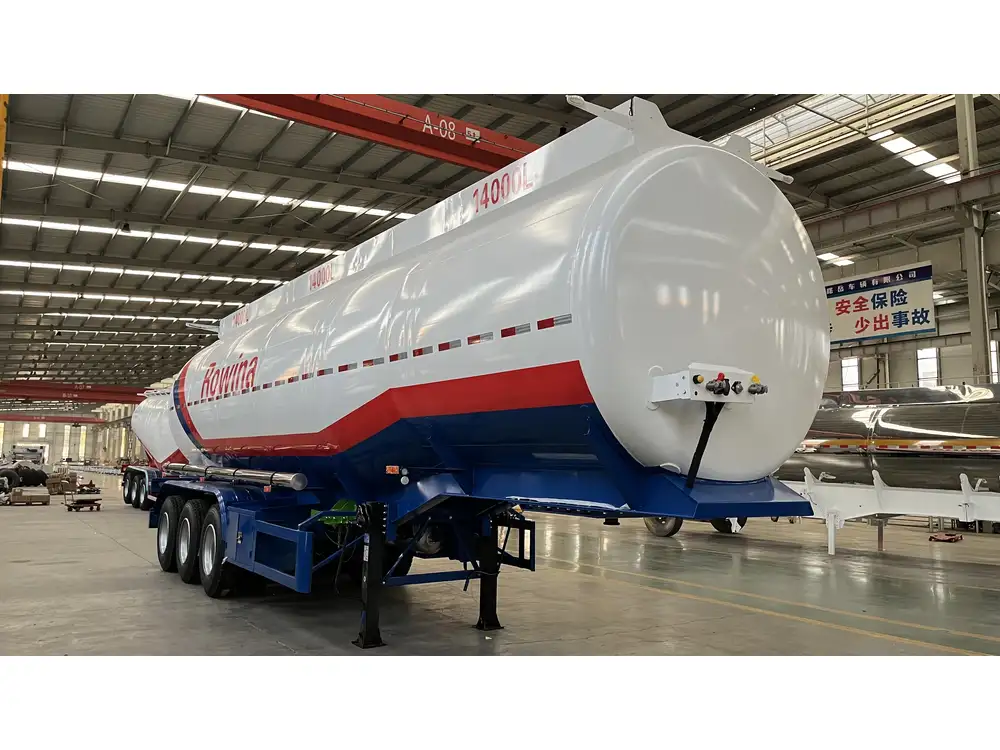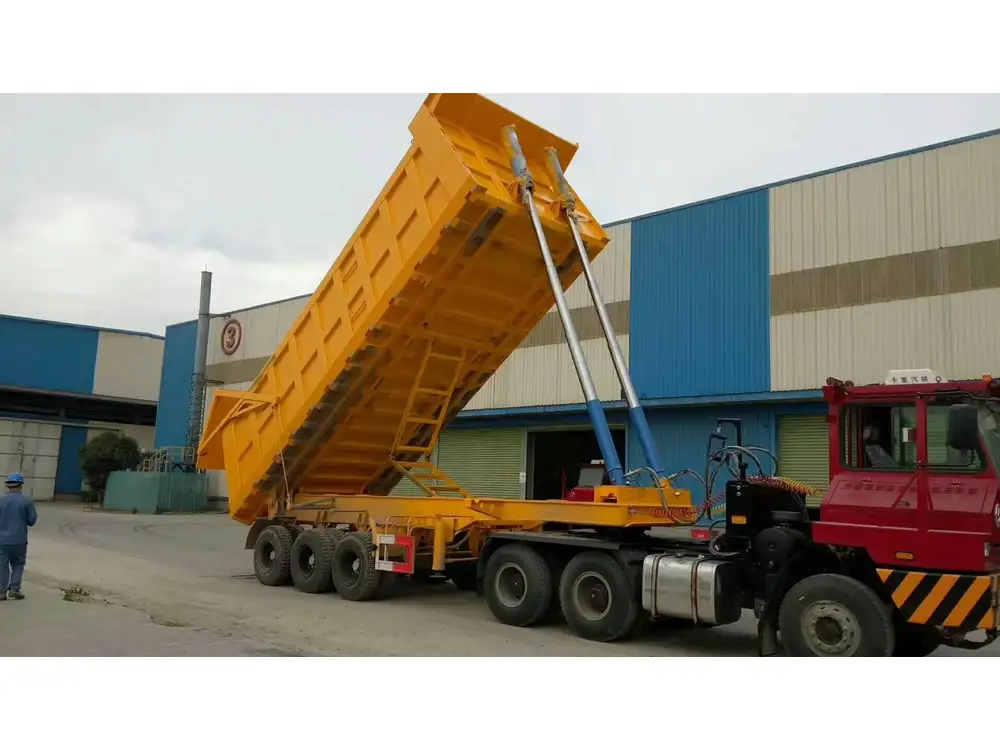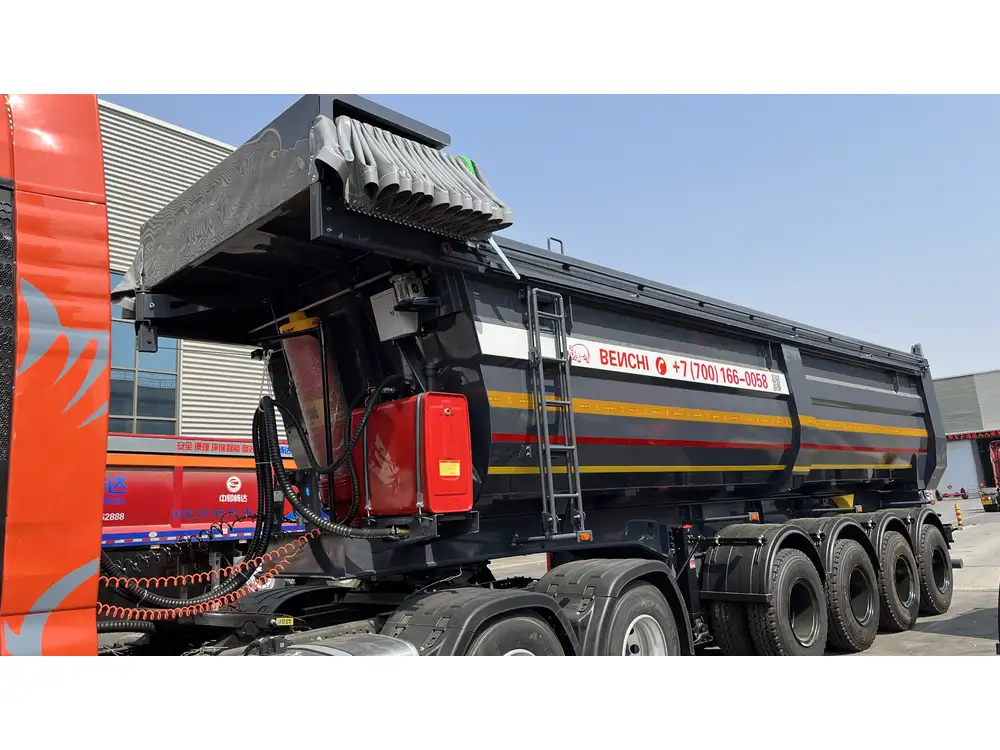The Gross Vehicle Weight Rating (GVWR) is a crucial parameter in the semi-trailer industry, determining how much weight a semi-trailer can safely carry. In this article, we will delve deep into the intricacies surrounding GVWR, its significance, how to calculate it, and its implications for manufacturers, operators, and road safety.
What is GVWR?
GVWR stands for Gross Vehicle Weight Rating. It is the maximum total weight that a semi-trailer, including its cargo, can safely handle as determined by the manufacturer. The GVWR is established based on various factors including the vehicle’s construction, design capabilities, and intended use. Exceeding this weight can lead to increased wear and tear, operational inefficiencies, and potential safety hazards.
Why is GVWR Important?
Understanding the GVWR of a semi-trailer is vital for several reasons:
- Safety Compliance: Adhering to GVWR guidelines ensures safer operation on roads, reducing the risk of accidents caused by overloading.
- Legal Regulations: There are numerous federal and state regulations governing vehicle weight limits. Non-compliance can result in fines and penalties.
- Insurance Implications: Overloading a vehicle could void insurance coverage in the event of an accident.
- Operational Efficiency: Optimizing load capacities can enhance fuel efficiency and longevity of the trailer and tractor unit.

Key Components Influencing GVWR
Determining the GVWR of semi-trailers is complex and influenced by multiple factors, which are outlined in the table below:
| Component | Description |
|---|---|
| Chassis | The structural frame that supports the semi-trailer and must withstand the load. |
| Suspension System | The configuration that supports the vehicle’s weight and provides comfort during transit. |
| Axles | The number of axles and their load rating are crucial in determining how weight is distributed. |
| Tires | Tire specifications and ratings affect load-bearing capacity, including pressure limits. |
| Braking System | A robust braking system is essential for safely managing heavier loads. |
Understanding Load Distribution
Effective weight distribution across the axles of a semi-trailer directly impacts its GVWR. Distributing weight evenly helps reduce the risk of axle overloads and improves vehicle stability during transit.
Common Load Distribution Issues:
- Overloading One Axle: Can lead to tire blowouts and potentially catastrophic failure during transit.
- Underloading: Results in inefficient fuel consumption due to poor aerodynamics and altered handling characteristics.
How to Calculate GVWR
Calculating the GVWR for a semi-trailer involves several steps:
Determine the Vehicle’s Empty Weight: This is the weight of the semi-trailer without any payload or cargo, often referred to as the “tare weight.”
Assess Maximum Payload: This is the weight the semi-trailer is designed to carry during operation.
Formula for GVWR:
[ \text{GVWR} = \text{Tare Weight} + \text{Maximum Payload} ]
For instance, if the tare weight of a semi-trailer is 10,000 pounds and it is designed to carry a maximum payload of 30,000 pounds, the GVWR would be calculated as follows:
[ \text{GVWR} = 10,000 \text{ lbs} + 30,000 \text{ lbs} = 40,000 \text{ lbs} ]
Example of GVWR Application
Consider a common semi-trailer designed for freight transportation:
| Specification | Value |
|---|---|
| Tare Weight | 12,000 lbs |
| Maximum Payload | 28,000 lbs |
| Calculated GVWR | 40,000 lbs |
This calculation illustrates that the semi-trailer has a GVWR of 40,000 pounds, which should not be exceeded for safe operation.
GVWR and Its Legislative Framework
Understanding the legal implications of GVWR is crucial for manufacturers and operators alike. The Federal Motor Carrier Safety Administration (FMCSA) sets forth regulations that dictate the maximum GVWR limits for semi-trailers:
- Federal Truck Weight Limits: The standard weight limit for semi-trailers operating on interstate highways is typically 80,000 pounds gross combined weight.
- State Variations: Individual states may have their own regulations that can affect allowable GVWR based on road types and conditions.
Compliance Testing and Certification
To ensure compliance with GVWR recommendations, semi-trailers must undergo rigorous testing and certification processes. These processes are designed to evaluate the structural integrity of the trailer under various load conditions.
Key Testing Procedures:
- Static Load Testing: Assessing the strength of the trailer under stationary load conditions.
- Dynamic Load Testing: Evaluating the performance of the trailer while in motion with weights applied.
- Braking Tests: Ensuring that braking systems function correctly under load.

Common Misconceptions About GVWR
GVWR Equals the Actual Weight of the Vehicle: Many believe that GVWR is the current weight of the vehicle; rather, it is the maximum permissible weight.
GVWR is Universal Across All Trailers: GVWR varies significantly between trailer types based on design and manufacturer specifications.
Higher GVWR Always Means Better Performance: A higher GVWR does not guarantee better handling. Proper weight distribution and overall vehicle setup are equally critical.
Impact of GVWR on Operational Costs
The implications of GVWR extend into operational costs, as overloads can lead to increased maintenance and repair expenses. Here’s how overloading can impact your bottom line:
- Tire Wear: Exceeding load ratings accelerates tire wear, leading to frequent replacements.
- Brake System Strain: Overloaded brake systems are prone to failure and may require early replacement, increasing maintenance costs.
- Fuel Efficiency: Overloaded vehicles consume more fuel, directly affecting operational profitability.
Cost-Benefit Analysis
| Item | Impact of Normal Operation | Impact of Overloading |
|---|---|---|
| Tire Lifespan | 50,000 miles | 25,000 miles |
| Brake Component Lifespan | 150,000 miles | 75,000 miles |
| Fuel Efficiency (mpg) | 8 mpg | 5 mpg |
This comparison underscores the financial repercussions of ignoring GVWR specifications.

Final Thoughts: Maximizing the Benefits of GVWR
Understanding and adhering to the Gross Vehicle Weight Rating is essential for the safe and economical operation of semi-trailers. For manufacturers, correctly applying GVWR guidelines is crucial during the design phase, while operators must remain vigilant about payload capacities during transport.
Recommendations for Operators:
- Regular Inspections: Conduct routine checks on weight, tires, and brakes to ensure compliance.
- Education: Invest in driver education programs that emphasize load management and GVWR knowledge.
- Leverage Technology: Utilize modern electronic logging devices to monitor load and ensure compliance with GVWR regulations.
By embracing comprehensive knowledge about GVWR, we ensure not only our operational efficiency but also contribute to road safety and service reliability in the transport industry.



